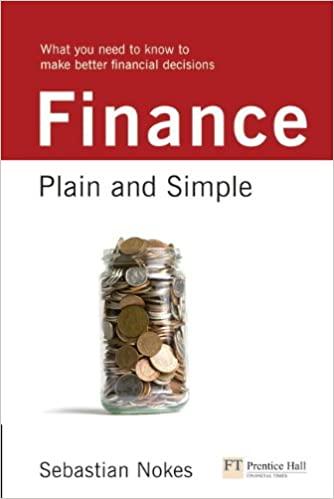Question
Suppose that there are two firms: a safe firm and a risky firm. Each firm needs to borrow the same amount of funds to start
Suppose that there are two firms: a safe firm and a risky firm. Each firm needs to borrow the same amount of funds to start a project. The safe firm knows with certainty that it will see a 30 percent return on the project (i.e., for each $100 borrowed, the safe firm will see revenue of $130). For the risky firm, there is a 60 percent chance that it will see an 80 percent return on its project (i.e., for each $100 borrowed, the risky firm will see revenue of $180) and a 40 percent chance that the project earns $0 (i.e., for each $100 borrowed, the risky firm will see revenue of $0). The firm defaults on the bond if $0 in earnings. Further, assume that savers have an opportunity cost of 10 percent (i.e., there is another opportunity available to savers that will give them revenue of $110 for each $100 invested). Finally, assume that all bonds have a maturity date of one year and all projects are completed in one year. A. (2 point) What is the expected return on the risky firms project per $100 borrowed? B. (2 point) Assuming symmetric information, what will the safe firms profit be for each $100 bond sold to finance the project? C. (2 point) Assuming symmetric information, what promised payment will savers require for each $100 bold sold by the risky firm? Will the risky firm sell any bonds? Why? D. (2 point) Now assume that there is asymmetric information. In this case, if both firms issue bonds, savers cant tell which firm is safe and which is risky. However, assume that savers do know the probabilities and returns for each firm, but they do not know which firm is which. Therefore, bonds from the two firms must offer the same payment. What promised payment will savers require for each $100 bond sold by either firm? E. (2 points) Under the assumptions from Part D above, would either firm end up selling bonds to savers? Explain why, using the concept of adverse selection.
Step by Step Solution
There are 3 Steps involved in it
Step: 1

Get Instant Access to Expert-Tailored Solutions
See step-by-step solutions with expert insights and AI powered tools for academic success
Step: 2

Step: 3

Ace Your Homework with AI
Get the answers you need in no time with our AI-driven, step-by-step assistance
Get Started


